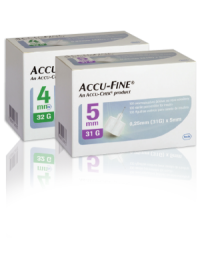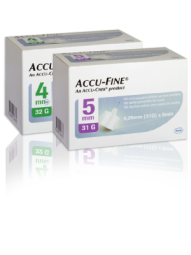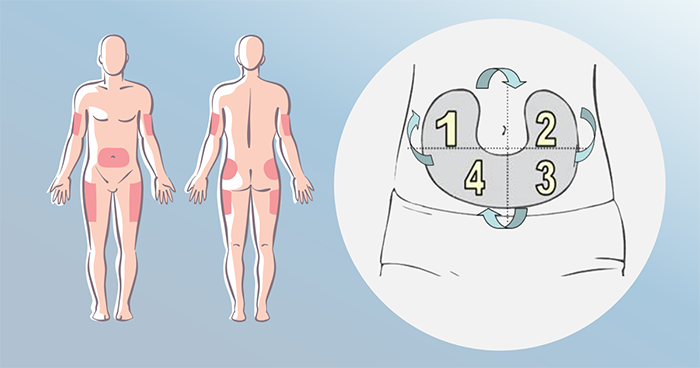Frequently Asked Questions
General Questions
When you go from a warm to cold place, the insulin shrinks and air enters the insulin cartridge through the needle. When extra air is in the insulin cartridge, your dose won't be right. When you go from a cold to warm place the insulin swells and leaks out through the needle. If you use NPH or 70/30, fluid may leak out while particles stay in. This will change the strength of your insulin.
There is no issue with storage of Pen Needles in the refrigerator per a 2-year study (Document # CP50007B, Rev. 3) However, it is important to inform the consumer that he/she needs to check whether, or not, the medication being injected can be refrigerated.
Contact your local health Dept.
Place the outer needle shield on a table with the opening pointing up. Carefully insert the pen needle into the opening of the shield, without holding onto shield, and push down firmly or lay the needle on the table and "scoop" it up. Grip the shield and use it to unscrew the pen needle. Dispose of needle properly. If you have a home sharps container, you can insert the pen into the pen needle port. Unscrew the needle, it will drop safely into the home sharps container.
Clinical studies have proven that short needles are an effective product for all people with diabetes. However, recommend that consumer consult with his/her physician to determine which needle will be best.
The shorter needles are made for injection into subcutaneous layer of skin and so reduce the risk of intermuscular injection. They may also reduce needle phobia and enhance acceptance of daily insulin injections.
“No Pinch” is also the recommended technique for shorter enables and allows for 1 handed injections.
Clinical results showed no statistically significant difference in blood glucose leakage or pain if a pinch-up is used.
Please respond to requests for design information, i.e.: “What is the mass for Pen Needles?” by informing the customer that information regarding the design for Pen Needles can be found in the ISO Standards, ISO 11608-2. This is a worldwide standard used for the design of pen needle products.
Please inform the customer that we can forward this information and get the matter resolved. Ask the customer to let us know if this issue continues/reoccurs. Please get the caller’s name and get the pharmacy’s complete address and phone number. Forward the information to local country marketing lead.
The pen needles should be dispensed as a box of 100. The package is not intended to be broken. Plans will pay for the box of 100; the pharmacist needs to enter it so that it reads as a 30 day supply, realized that the patient will not get if refilled for another 60 days or so.
The sterilization process uses cobalt-60 (a radionuclided cobalt) and does not add any cobalt to the product; The sterilization process is simply an exposure to the gamma rays emitted by the cobalt which kills bacteria.
This type of sterilization process is approved by the FDA for food sterilization of chicken, fruit and spices.
However, our cannula is made from Type 304 Stainless steel. This grade of stainless is composed of many substances including carbon, manganese, chromium, nickel and others in various percentages. This does not DIRECTLY add cobalt into the material BUT it could be contained in the nickel at a residual level of about ~0.2%. The amount of nickel in 304 stainless is about 10% so the potential amount of cobalt in the need would be about 0.02%. The cobalt which may be contained in the nickel is simple cobalt, not cobalt-60.
So the answer is there is no cobalt from the sterilization process but there could be a very small amount in the needle due to the nickel.
One other thing to consider with this patient could be a nickel sensitivity as well.
There is no dead space in the pen needles. The design of the pen needles has accounted for the residual volume in the cannula as part of the delivered dose.




